Origami, the ancient Japanese art of paper folding, is a captivating practice that transforms simple sheets of paper into intricate works of art. Triangles emerge as foundational elements within this creative realm, unlocking many possibilities.
Using triangular folds in origami enhances structural stability and enables the crafting of diverse and visually appealing designs.
From traditional symbols like the origami crane to geometric marvels such as pyramids, triangles are pivotal in shaping the essence of origami creations.
Explore the intersection of geometry and art as we delve into the captivating world of origami, where every fold holds the key to artistic expression.
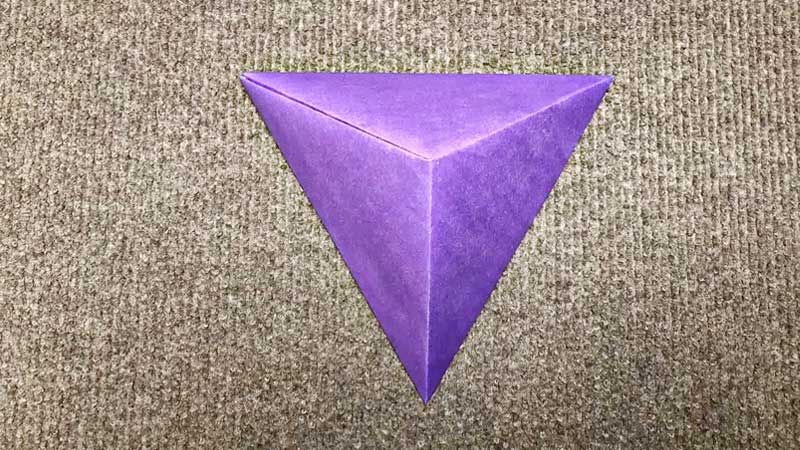
10 Types of Origami That Specifically Involve Triangles
Various origami models and designs require the use of triangles, either as part of the folding process or as integral components of the final creation.
Here are some examples of origami that specifically involve triangles:
1. Origami Crane
The origami crane is a classic model that typically starts with a square sheet of paper. The initial folds often include creating a diagonal fold to form a triangle, which is the foundation for shaping the crane’s wings, neck, and tail.
2. Origami Frog
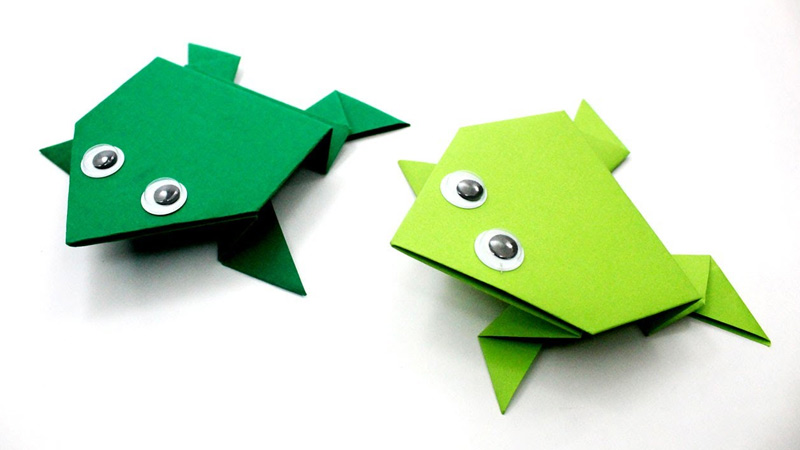
Origami frogs often begin with a preliminary fold that creates a triangle. This triangular base is then manipulated to form the frog’s body and legs.
3. Origami Fish
Many fish origami designs start with a triangle as the base. Triangular folds are used to create the fish’s fins, tail, and body.
4. Origami Star
Various origami star designs involve folding paper into triangular shapes. These triangles are then arranged or interlocked to create the points of the star.
5. Origami Heart
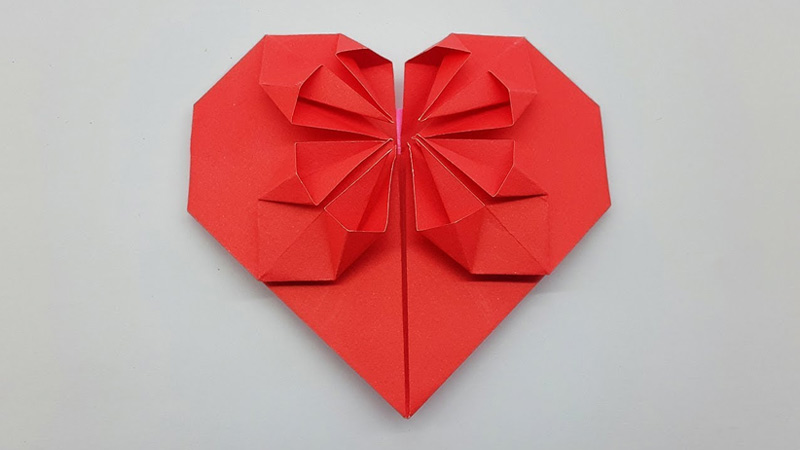
Some origami heart designs incorporate triangular folds as part of the folding process. The triangular elements contribute to the overall shape of the heart.
6. Origami Pyramid
Origami pyramids often require folding a square into a triangular shape. Multiple triangular folds are used to create the sides of the pyramid, resulting in a three-dimensional structure.
7. Origami Tessellations
Tessellations involve repeating geometric shapes across a surface, and triangles are commonly used in origami tessellation patterns. These intricate designs can create stunning visual effects.
8. Origami Modular Units
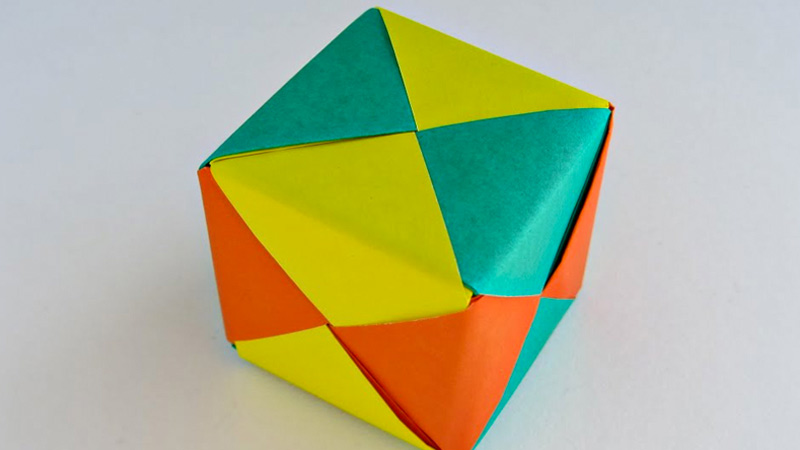
Modular origami involves creating three-dimensional structures by assembling multiple folded units. Triangular folds are often used to create these units, providing stability and allowing for various configurations.
9. Origami Boxes and Containers
Many origami boxes and containers start with a triangular fold as part of the base structure. The manipulation of these triangles contributes to the overall form of the finished container.
10. Origami Ninja Star (Shuriken)
The classic origami ninja star involves folding a square sheet of paper into a triangular shape multiple times. The resulting folded design can be thrown like a shuriken (ninja star).
What Role Do Triangles Play in Origami?
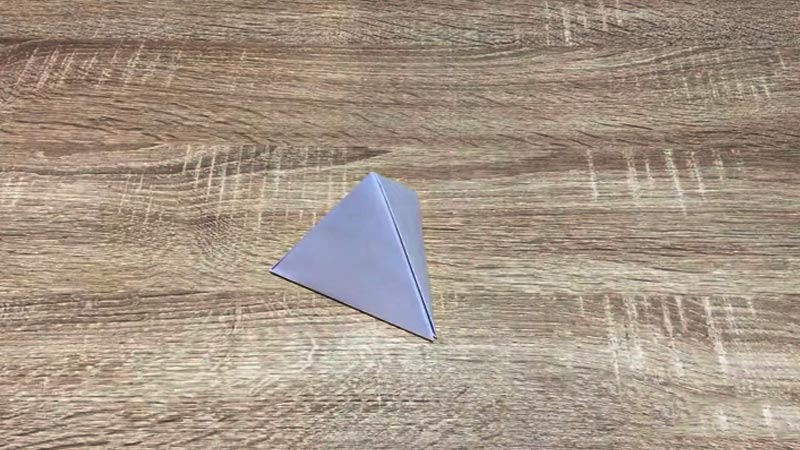
Triangles are crucial in origami, serving as fundamental building blocks and providing structural stability for various designs.
The significance of triangles in origami can be understood through several key aspects:
Stability and Foundation
Triangles are geometrically stable shapes. When a square sheet of paper is folded diagonally, it forms an equilateral triangle. This triangular base is a stable foundation for creating more complex origami designs.
The inherent strength of triangles contributes to the structural integrity of the folded model.
Versatility
Triangles are versatile shapes that can be combined and manipulated in numerous ways to create a wide range of forms.
Whether used as standalone components or interconnected to form larger structures, triangles provide flexibility in design and allow for the creation of intricate and varied origami models.
Origami Bases
Many traditional origami models begin with specific bases, and triangular bases are among the most common.
The initial triangular folds often determine the model’s overall structure, laying the groundwork for subsequent folds that shape the final creation.
Symmetry and Balance
Triangles contribute to achieving symmetry and balance in origami designs. Symmetrical arrangements of triangles in a model help maintain visual harmony and aesthetic appeal.
Origami artists often use triangular folds to create balanced and visually pleasing compositions.
Educational Tool
Origami is often used as an educational tool, especially in teaching geometry and spatial reasoning.
Triangles are fundamental geometric shapes, and their manipulation in origami provides a practical and engaging way to learn about mathematical concepts such as angles, symmetry, and proportion.
Creation of Specific Shapes
Triangles are used strategically to create specific shapes within origami models. For example, folding a square into a triangular shape is a common starting point for models like cranes and frogs.
Triangular folds contribute to forming wings, tails, and other distinctive features in various origami designs.
Complex Origami Structures
In modular origami, where multiple folded units are assembled to create three-dimensional structures, triangles often play a central role. The interlocking of triangular modules allows for constructing intricate and complex origami sculptures.
How to Fold a Paper Triangle? Step-By-Step Origami Guide for Beginners
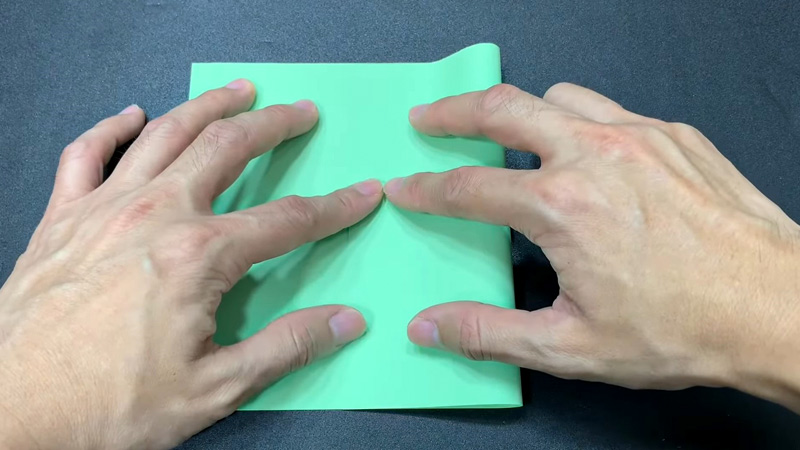
Folding a paper into a triangle is a fundamental origami technique that is a building block for many creations.
Here’s a step-by-step guide on how to fold a paper triangle:
Materials Needed
Square sheet of paper
Steps:
Step 1: Start with a Square Sheet of Paper
Begin with a square sheet of paper. If your paper is not square, fold one corner diagonally to the opposite edge, creating a triangle. Trim off the excess to form a square.
Step 2: Fold Diagonally to Create the First Triangle
Fold one corner of the square diagonally to the opposite corner, creating a triangle. Ensure that the edges align perfectly, and press down to create a sharp crease.
Step 3: Unfold the Triangle
Unfold the paper back to its square shape. You now have a diagonal crease running through the center of the square.
Step 4: Fold Diagonally in the Opposite Direction
Fold the paper diagonally in the opposite direction, creating another triangle. This fold will intersect the previous one, forming an “X” shape on the paper.
Step 5: Unfold to Reveal the Triangle
Unfold the paper one more time. The intersection of the diagonal creases will now create a smaller square with a clear triangular shape.
Step 6: Forming the Triangle
To create the triangle, gently hold the paper at two adjacent corners and bring them together. The paper will naturally collapse along the existing creases, forming a triangle.
Step 7: Flatten and Adjust
Flatten the triangle and adjust the edges as needed. Ensure that the creases are well-defined, and press down to reinforce them.
FAQs
Can beginners try origami models with triangles?
Absolutely. Starting with simple models like the origami crane, which involves basic triangular folds, is a great way for beginners to learn and enjoy the art of paper folding.
Are there symbolic meanings associated with origami models using triangles?
Certain models, like the origami crane, carry symbolic meanings in Japanese culture. The triangle-shaped folds contribute to the representation of these symbols.
How do triangles contribute to the visual appeal of origami creations?
Triangles add symmetry and balance, enhancing the aesthetic appeal of origami models. They serve as building blocks for creating visually captivating patterns and structures.
To Recap
In the intricate tapestry of origami, triangles weave a story of structural elegance and artistic ingenuity.
As we conclude this exploration into what origami requires from a triangle, it becomes evident that these geometric elements serve as the silent architects of folded wonders.
From the serene symbolism of cranes to the geometric precision of pyramids, triangles imbue each creation with stability and grace.
This journey through the artistry of paper folding reveals that triangles, whether subtly embedded or prominently displayed, are indispensable contributors to the magic of origami.
Embrace the beauty within each fold, and let the triangles guide your hands in creating intricate, awe-inspiring paper masterpieces.
Leave a Reply